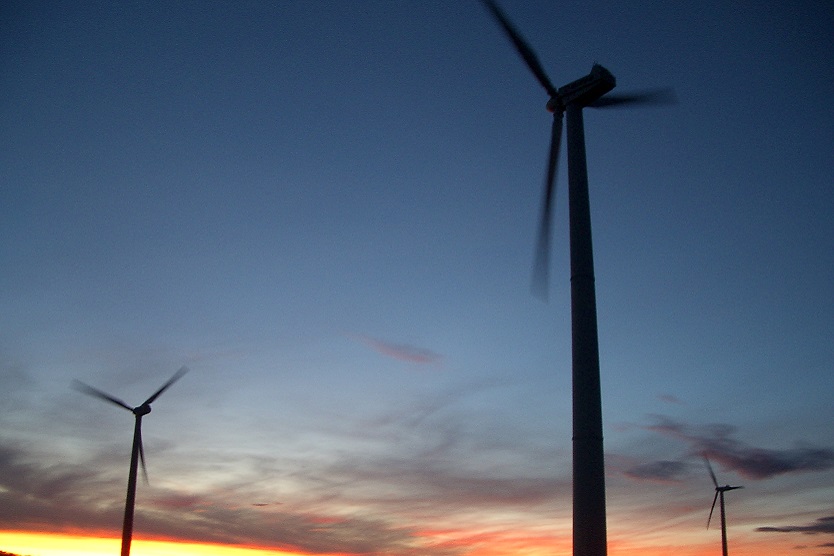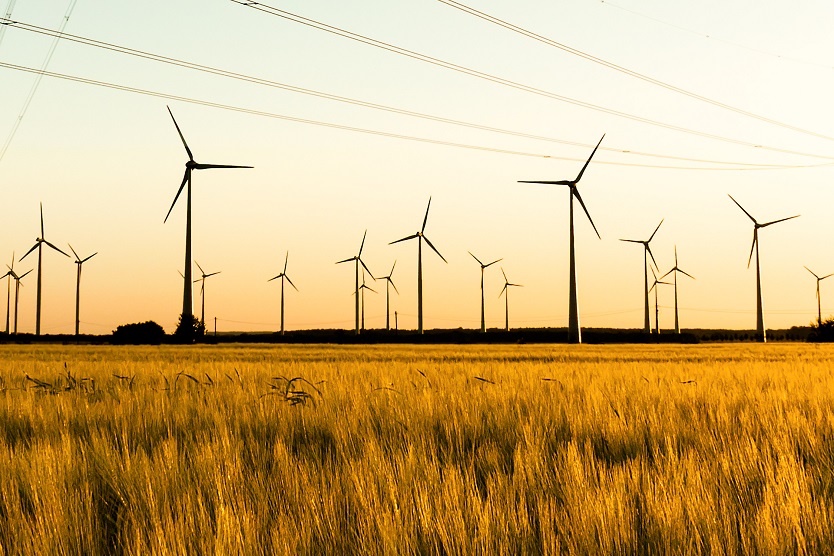Advantages

- Electricity at competitive prices
- Wide range of applications, from a few kW to several MW
- Ideal basis for an energy mix including other renewable energy power plants
Wind turbines are among the most important providers of renewable electricity in Germany. Take a look at how they work, the technology behind them and the opportunities wind energy provides!

© iStock.com/kflGALORE
People have been using wind energy for centuries – originally to drive mechanical processes such as milling grain or pumping water. Today, it is used to generate electricity. In 2016, around 12 percent of all electricity generated in Germany came from wind energy (see Federal Ministry for Economic Affairs and Energy). On land, many windy locations have already been exploited and more powerful power plants are now replacing older ones. The expansion of wind power in Germany is also gaining momentum on the high seas with offshore wind farms.
Cutting-edge wind farms can now deliver as much electricity as conventional power plants – at a similar price.
Globally, wind energy plants with a total capacity of over 460 gigawatts were installed in 2016 (see IRENA).
Thanks to strong development of the market in Germany, German manufacturers have acquired a wealth of valuable experience in this area – from manufacturing of wind turbines and their components, such as generators, drives and rotor blades, through planning and operation, to integrating wind farms into the power grid.

The kinetic energy of the wind is used to generate electricity from wind energy. This kinetic energy acts on the rotor blades, causing the rotor to rotate. The rotation energy is then fed to a generator, which generates electricity. A wind power plant can convert up to 59 percent of the kinetic energy contained in wind into mechanical energy. Aerodynamic losses also reduce efficiency. Wind speed is a decisive factor in a wind turbine’s yield. The output therefore varies, depending on the weather.
Onshore wind power turbines can be categorised according to their output capacity. Small wind turbines have a capacity of up to 50 kW. Large-scale wind turbines can reach a capacity of up to around 7 MW with higher hub heights.
In domestic use, small wind turbines can be used to generate electricity for households. Depending on the prevailing wind conditions, these can support or even replace conventional electricity sources, e. g. diesel. When combined with other renewable energy technologies, such as photovoltaics and storage solutions, small wind turbines are ideal for providing the base electricity supply in off-grid regions.
Large onshore wind turbines are commonly installed in wind farms with a grid connection. To reach their maximum capacity output, they require high wind speed and constant wind flow. Therefore, they are usually located close to the coast or on elevated positions such as the top of a mountain, since these areas offer the best wind conditions.
In case of stand-alone single units, the wind energy can also be directly supplied to commercial, industrial or agricultural consumers in order to power factories, commercial complexes and agricultural equipment.
Offshore wind farms with several hundred megawatts of installed capacity benefit from continuous and stronger wind speeds on the open sea, which allows them to deliver constant electricity and replace large-scale power plants.
Establishing a connection to the power grid (including cables to the overland grid, control units and transformer substations) represents the biggest cost in setting up offshore wind farms.
To develop modern wind turbines, engineers drew on experience from aircraft construction in order to exploit the upward lift produced by wind.
The most widely used technology today is the three-blade horizontal rotor. It has proven to be mechanically reliable, visually pleasing and quiet. The design was developed to deliver optimum power generation at wind speeds of 12 to 16 m/s, while still operating efficiently at lower speeds. In strong winds, the output is reduced to ensure a constant amount of electricity is fed into the grid.
energy solutions - made in Germany
Technology brochure
Opens PDF "energy solutions - made in Germany" in a new window.